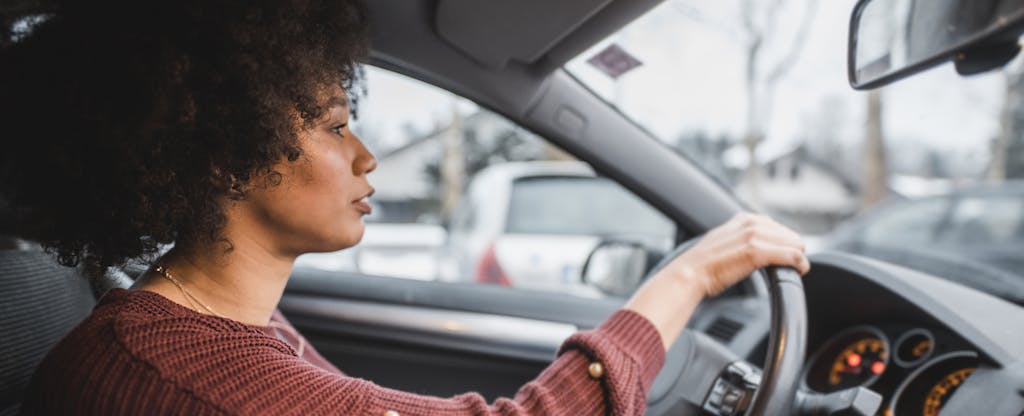In a Nutshell
A VIN, or vehicle identification number, is assigned to a car by the automaker and reveals a range of details about the car, including its model year, country of origin, serial number and even where it was assembled. The VIN is a great place to start if you’re planning to buy a used vehicle and want to learn more about its history — or if you want to see if your car has any recalls.A VIN is the key to unlocking a vehicle’s history.
The 17-character VIN that’s stamped on your car may seem like a confusing jumble of numbers and letters, but they hold a lot of info about a car’s past and present.
Let’s take a closer look at what the characters in a VIN mean, where you can find a car’s VIN and when a VIN can come in handy.
What does a VIN mean?
Each VIN is unique — think of it as a car’s fingerprint. Every car in the United States that has a model year of 1981 or later is required to have a VIN in the same standardized format. Vehicles made before 1981 had VINs, but their length and format varied by automaker.
Although the string of numbers and letters may seem random, there’s actually a code — with different characters translating into different information about the vehicle.
- Characters 1-3 identify the car manufacturer.
- Characters 4-8 outline the vehicle model, body style, engine type and more.
- Character 9 is a code completed by the manufacturer to confirm the accuracy of the VIN number.
- Character 10 indicates the model year of the vehicle.
- Character 11 reveals which plant assembled the car.
- Characters 12-17 is the car’s serial number (for high-volume manufacturers).
 Image: aawhatisvin-1
Image: aawhatisvin-1If you want to understand what a car’s VIN means, the National Highway Traffic Safety Administration VIN decoder can help. Just enter the car’s VIN and model year, and the VIN Decoder tool will interpret the VIN for you.
Where can I find a car’s VIN?
The VIN may appear in one or more places on a car as well as in some documents.
On the car
The most common location is where the windshield meets the dashboard on the driver’s side of the vehicle. To see it easily, stand outside the car. The driver’s side door jamb — near where the door latch is — is another place to look.
Under the Federal Motor Vehicle Theft Prevention Standard, vehicles with a model year of 1987 or later that are designated “high-theft” also feature the VIN on certain major parts such as the engine, transmission, doors and fenders. This can help police trace and recover parts from stolen cars.
Pay attention to the VINs on a vehicle you’re considering buying. If the VIN appears in multiple places, but the combination of numbers and letters isn’t the same in each location, the car may have been rebuilt with stolen parts.
On some documents
If you aren’t near the car, you’ll likely also be able to find the VIN on the car’s title or registration card, auto insurance policy or service records.
Why is a VIN important?
A VIN comes into play in a number of scenarios.
If you want to buy a used car
When buying a used car, getting the details on a car’s history can help you make sure you don’t end up with a lemon. Dealerships and car-buying websites may provide vehicle history reports, but if you’re buying from an individual, you’ll likely need to get a report yourself.
To do this, you’ll typically need the car’s VIN. You can access vehicle history reports easily on several websites, such as Carfax and AutoCheck, using the VIN.
You can also use the National Insurance Crime Bureau’s VINCheck tool to find out if a car has been reported as stolen or has a salvage title.
If you want to know if a car has any recalls
Curious if your car’s manufacturer has issued any safety recalls — or if a car you’re considering buying has any major recalls? Enter the VIN into the National Highway Traffic Safety Administration’s recall tool to stay current on recalls specific to the car within the past 15 calendar years. You can also use Credit Karma Auto to check for recalls on vehicles you’ve matched to your Credit Karma profile.
If your car is stolen
It’s a good idea to have your VIN on hand in case your car — or parts of your car — are stolen. Law enforcement can enter the VIN into local and national databases and can use it to help identify and recover a stolen vehicle or parts.
Next steps
A VIN can reveal a lot of essential information about a vehicle. If you plan to buy a used car, use its VIN to gather information on the car’s past.
But don’t stop at a vehicle history report. Be sure to take a test drive and get the vehicle inspected by an independent mechanic who can advise you on its reliability before you buy.


